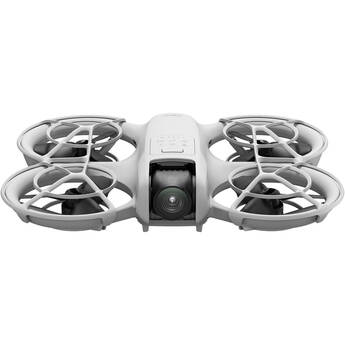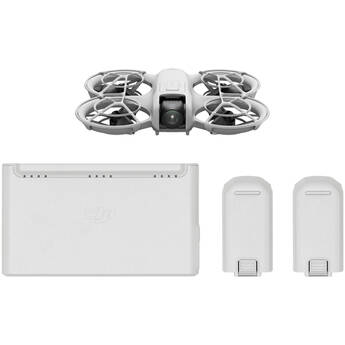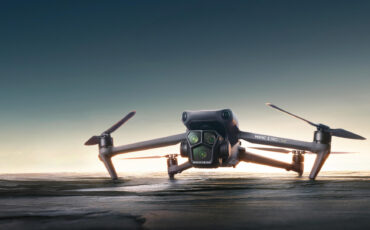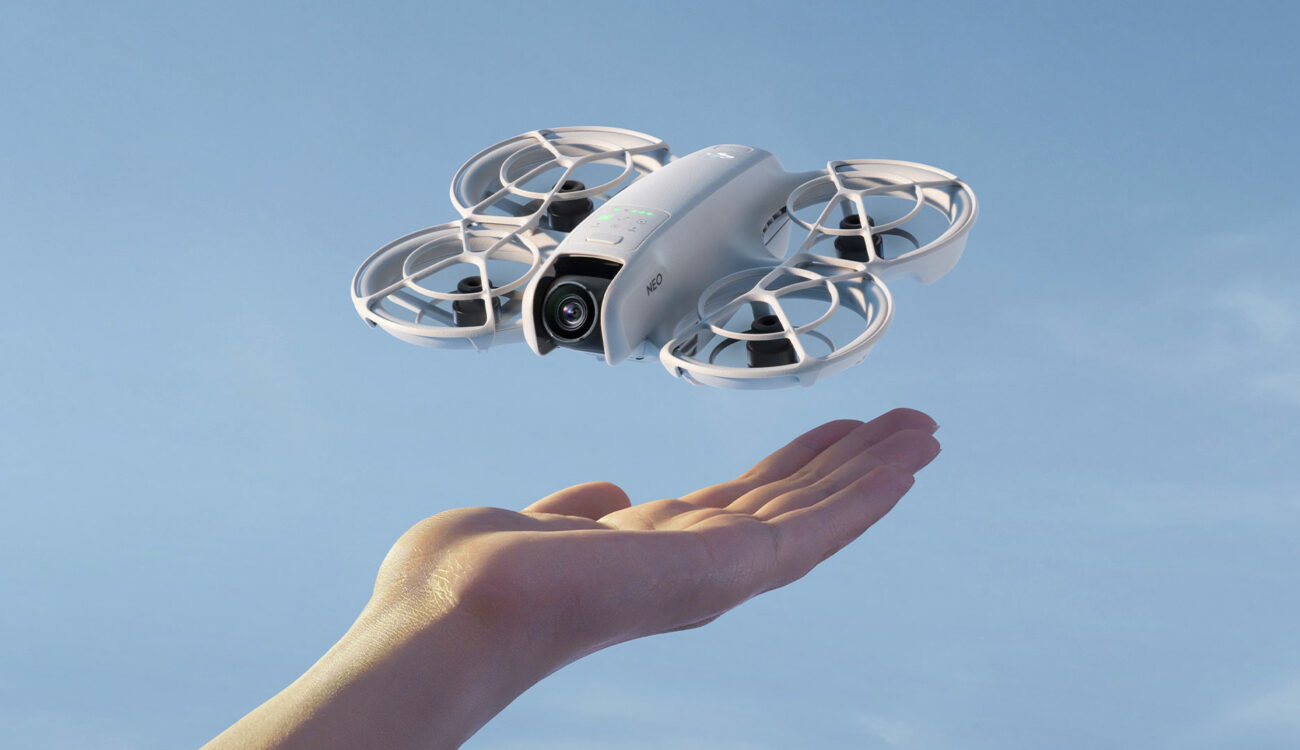
DJI Neo is a new 135g/0.29 lb. palm-sized drone with propeller guards, automatic flight modes, smartphone control, and more. Designed for creators, the drone can take 12MP photos or record up to 4K30fps (or 1080p60fps) video with RockSteady (or HorizonBalancing) stabilization. Able to fly for up to 18 minutes, the drone is available now for $199.
After just announcing their new telephoto lens, DJI launched a tiny new drone for beginners and creators. The new DJI Neo offers some interesting features while being one of the smallest drones on the market. Let’s take a look at the new DJI Neo.
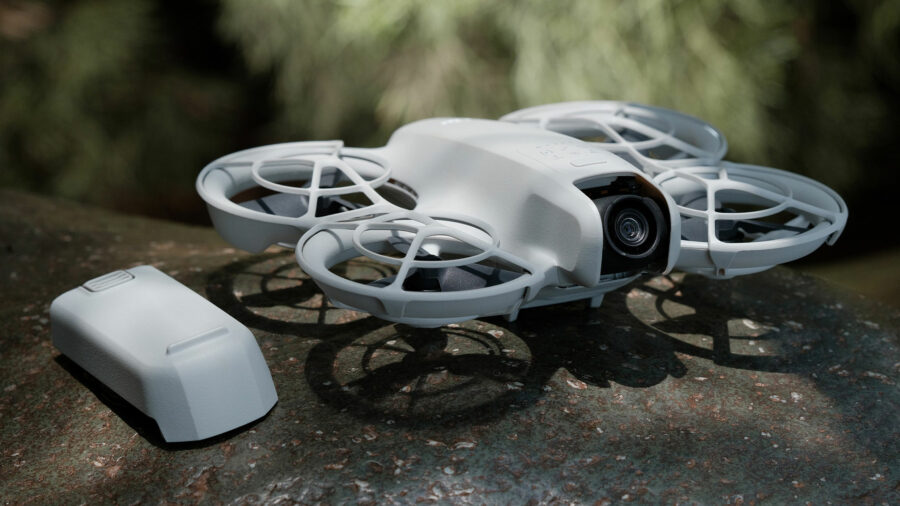
Legacy of DJI Spark
Looking at Neo’s specs and features, it seems easy to imagine that this UAV will truly democratize drone flying. Not only is the drone extremely tiny and lightweight, but it can also be operated entirely without a controller or using only a phone.
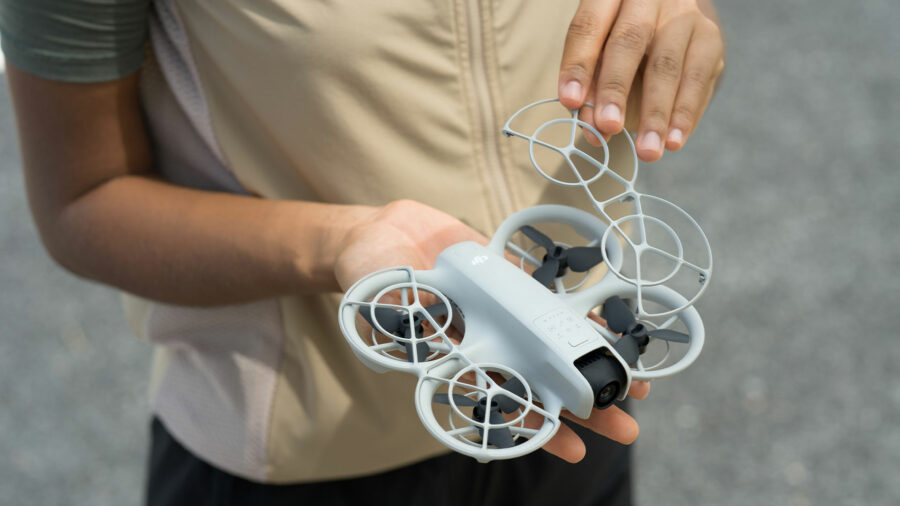
This way of controlling a drone is not entirely new for DJI. Back in May 2017, the company released the DJI Spark – a small drone that could be operated only by hand gestures or with a mobile phone (on top of the classic remote controller). That said, the new DJI Neo somehow looks like an improved Spark successor. With a takeoff weight of only 135g/4.76oz, Neo is much lighter than the Spark (300g/0.66 lbs). Neo’s 2-inch propellers also feature prop guards, making the drone more durable and safer to fly near people. DJI Neo is also a much smaller drone overall. Naturally, the camera unit also offers much better quality with up to 4K30fps video (Spark could only film in up to 1080p30fps). But more on that later.
Philip Bloom's Cinematic Masterclass
DJI Neo flying
When using Neo without any controller, you can simply press the drone’s mode button and select the desired shooting mode. The drone will automatically take off from the palm of your hand and follow one of the intelligent shooting modes. After the flight, when you place your palm underneath the hovering drone, it will automatically land on it.
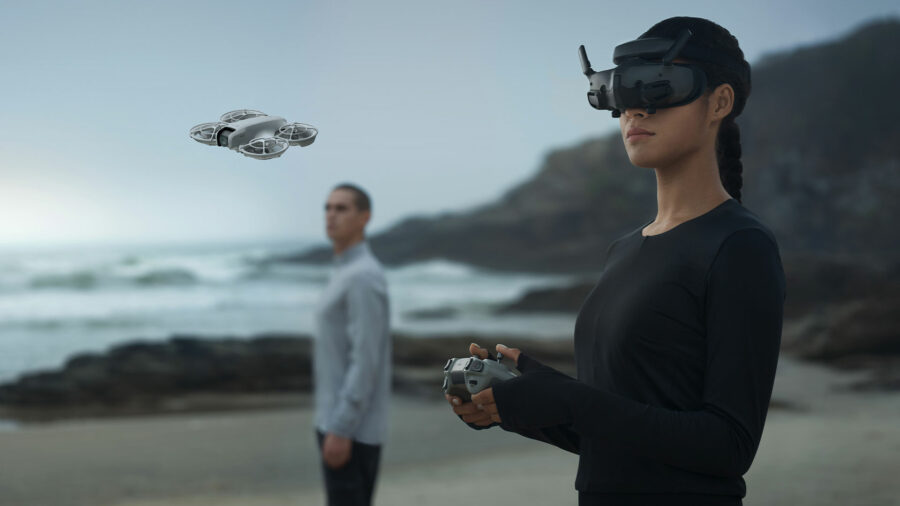
At launch, five control methods are supported:
- Controller-free: Operate without any device on the ground, relying on the drone’s vision positioning system.
- Control with a smartphone—After connecting to the drone’s WiFi, use a smartphone as the ground device to control it. DJI claims the drone can transmit a camera feed for up to 30m.
- Control with standard remote controller – Use the DJI RC-N3 as the ground device, utilizing the O4 transmission system (up to 10km distance in FCC mode).
- Control with RC Motion and Goggles – DJI RC Motion 3 + DJI Goggles 3, utilizing the O4 video transmission system (up to 10km distance in FCC mode).
- Control with FPV Remote Controller and Goggles – DJI FPV Remote Controller 3 + DJI Goggles 3, utilizing the O4 video transmission system (up to 10km distance in FCC mode).
Although very lightweight, Neo can fly normally in wind conditions up to 8m/s (level 4 wind), according to DJI. When used with DJI Goggles 3, it can output a secondary live feed on a smartphone through the DJI Fly app.
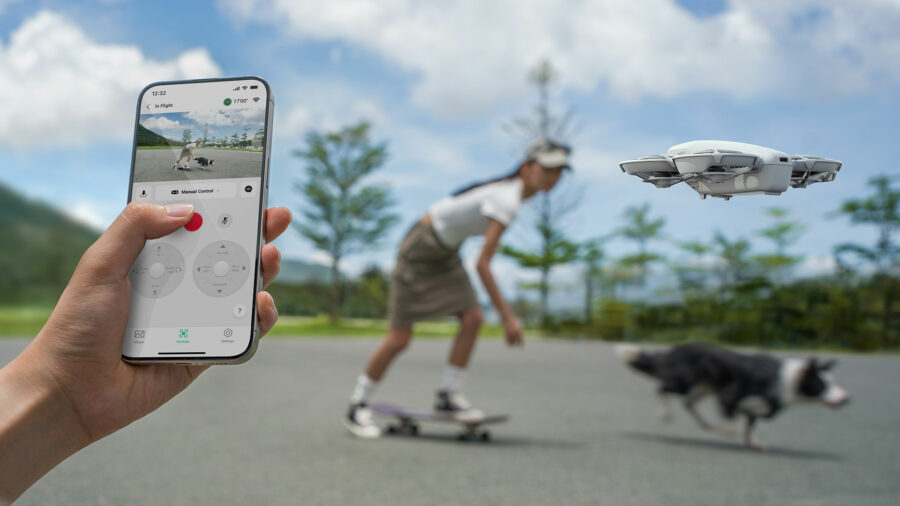
The drone offers an automatic follow mode with subject tracking. QuickShots modes include dronie, circle, rocket, spotlight, and custom (requires the drone to connect to the DJI Fly app.) Also included are DirectionTrack, Helix, and Boomerang.
Additionally, DJI Neo inherited the Easy ACRO mode from the Avata 2. That means the drone can perform different acrobatic maneuvers (such as flips, rolls, or 180° drifts) with a single button push. For this, however, you need to fly Neo with the DJI RC Motion 3 controller.
Camera specs
To save weight, Neo does not offer a 3-axis gimbal-stabilized camera. Instead, it has a single-axis gimbal offering up/down tilting range from -90° to 60°.
The camera features a 12MP (4000×3000) 1/2” image sensor with an f/2.8 ultra-wide lens (FOV 117.6°, 14mm full-frame focal length equivalent).
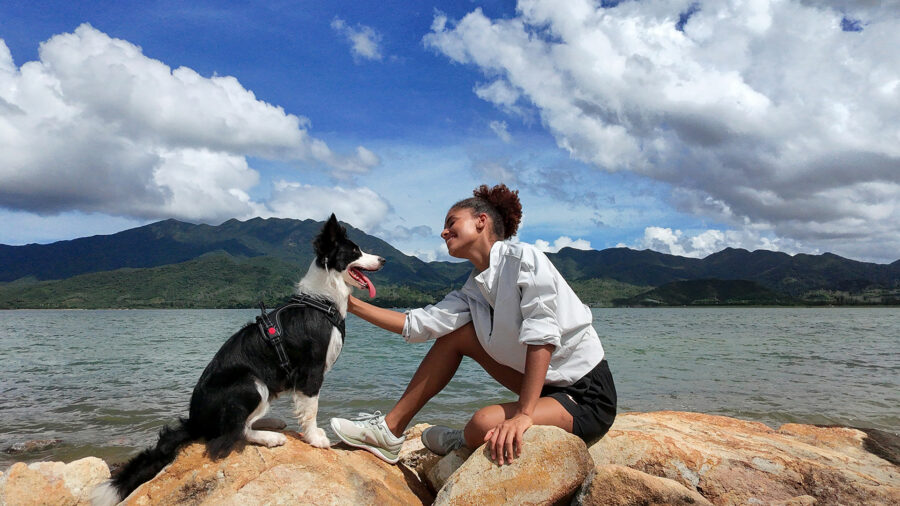
On top of 12MP (JPEG only) photos, the camera can record video in the following formats:
- 4K (4:3): 3840×2880@30fps (EIS off, can be stabilized later with Gyroflow)
- 1080p (4:3): 1440×1080@60/50/30fps (EIS off, can be stabilized later with Gyroflow)
- 4K (16:9): 3840×2160@30fps (EIS on – RockSteady or HorizonBalancing)
- 1080p (16:9): 1920×1080@60/50/30fps (EIS on – RockSteady or HorizonBalancing)
The resulting MP4 video files have a bitrate of up to 75Mbps and are only available in “normal” color mode.
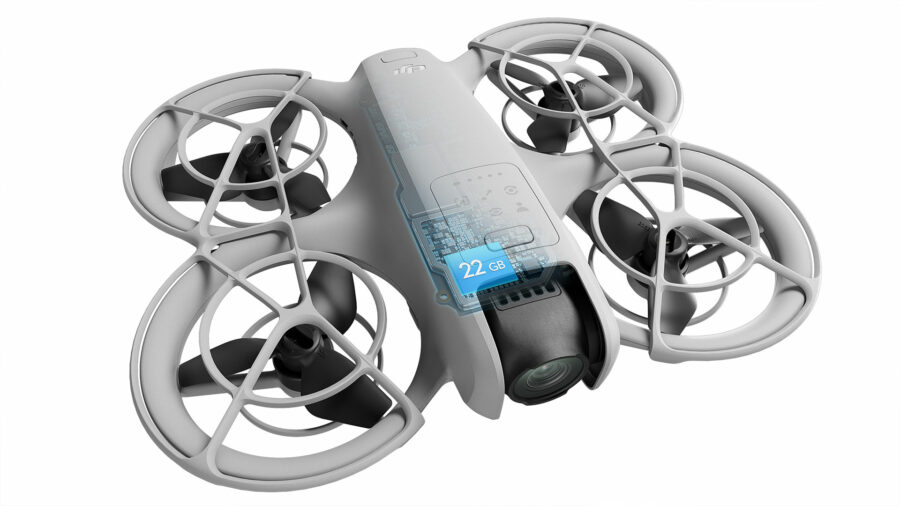
Neo does not offer a MicroSD card slot. Instead, it has 22GB of internal memory. To copy files from the drone, you can use either a high-speed WiFi connection (up to 30MB/s) or a USB-C cable.
While looking at the recording modes, I can’t help but think many people would have liked to see a stabilized 9:16 recording mode in this drone – especially as it is aimed at creators and designed to send files straight to a phone for quick publishing.
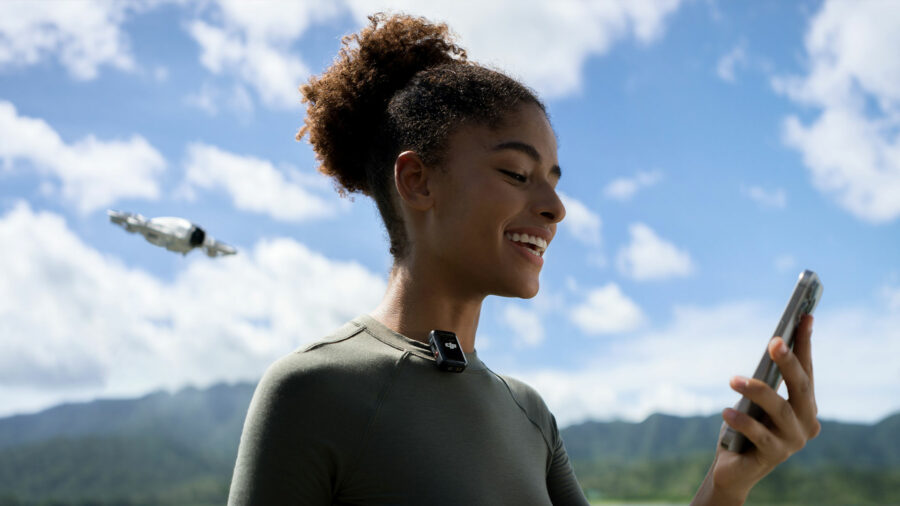
Audio recording via DJI Mic 2 or phone
One really cool feature is that after linking with the DJI Fly app, DJI Neo can record audio via the DJI Mic 2, which can be connected to your mobile phone via Bluetooth or directly through the phone’s built-in microphone. The DJI Fly app automatically eliminates propeller noise (rated at 79dB for Neo) and merges the audio track with the drone’s video footage. This could be useful for shots when Neo is tracking you while you walk and talk.
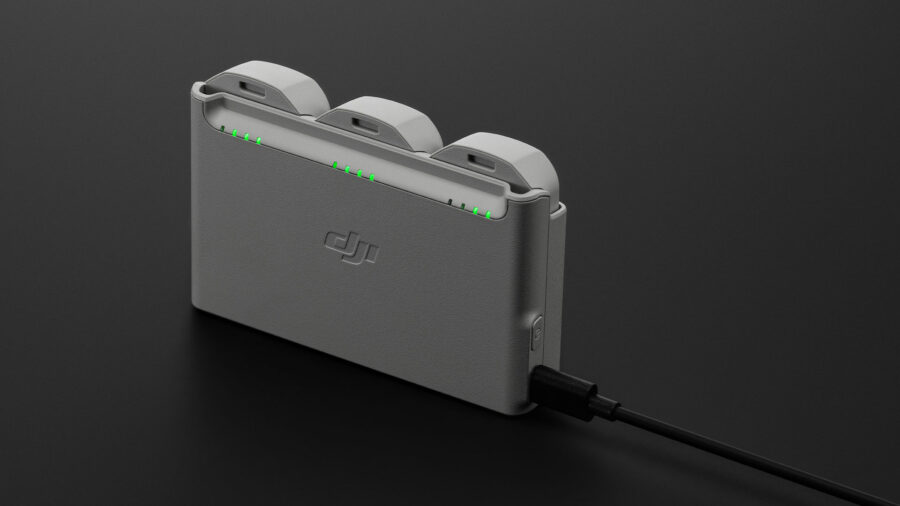
Battery and charging
The 1435 mAh battery can keep Neo in the air for about 18 minutes (17 minutes with the propeller guards). The battery can be charged directly in the drone using the included USB-C to USB-C cable (maximum charging power is 15W).
The DJI Neo two-way charging hub is DJI’s first battery charging hub to support simultaneous charging (using a charger of more than 45W allows for charging three batteries simultaneously, while a 30W charger can only charge two batteries concurrently). With the maximum charging power of 60W, the hub can charge all three batteries simultaneously from 0% to 100% in about 60 minutes.
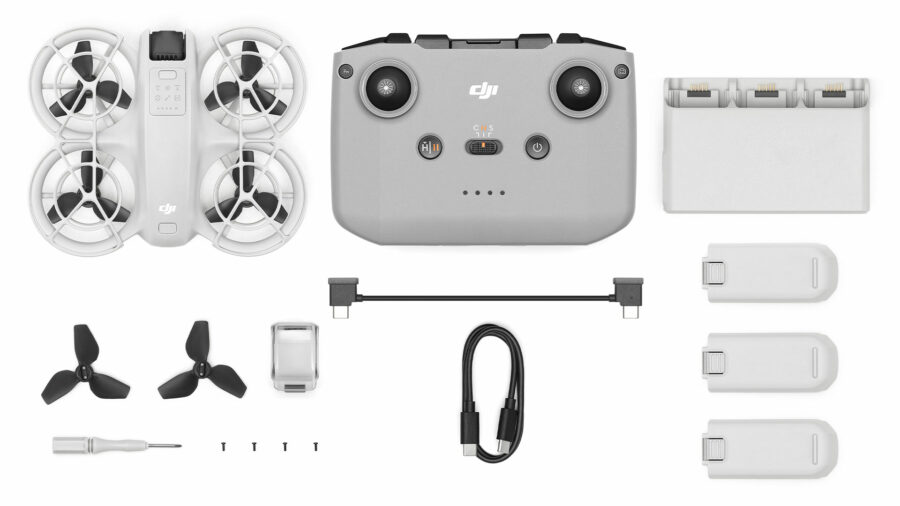
Price and availability
Neo is available for pre-order now. As always, DJI offers a few different pre-configured packages depending on what you want (and this time also depending on where you buy):
- DJI Neo standalone – mainly includes the drone and one drone battery. This version costs $199 (around €199 in Europe).
- DJI Neo Combo (only available in the USA) – mainly includes the drone and three batteries and costs $289.
- DJI Neo Fly More Combo (available globally except the USA) – mainly includes the drone, three batteries, and the standard DJI RC-N3 Remote Controller. The Fly More Combo is being sold for around €349.
DJI Goggles 3, DJI RC Motion 3, DJI RC-N2, and DJI FPV Remote Controller 3 are available for separate purchase.
For more information, please visit the DJI website.
What do you think about the DJI Neo? Is this something you would like to use for your video projects? Which method of controlling the drone sounds the most appealing to you? Let us know in the comments section underneath the article.



